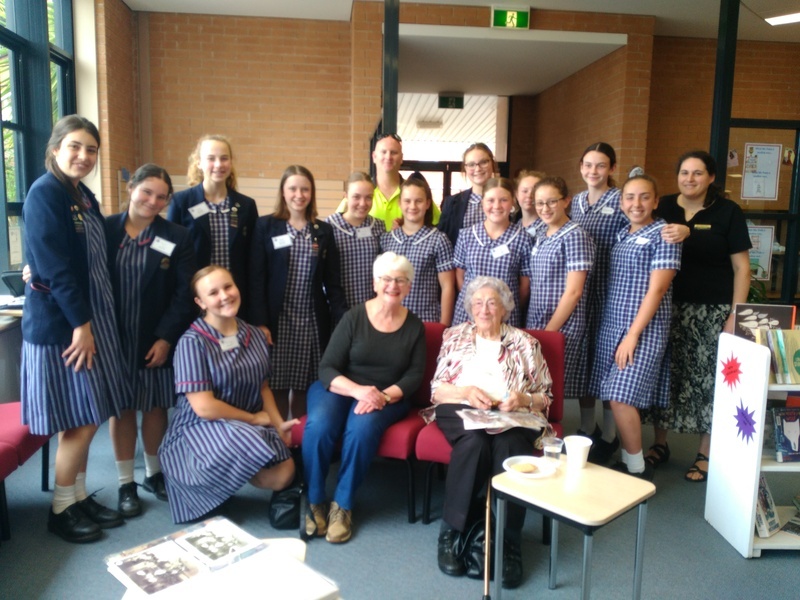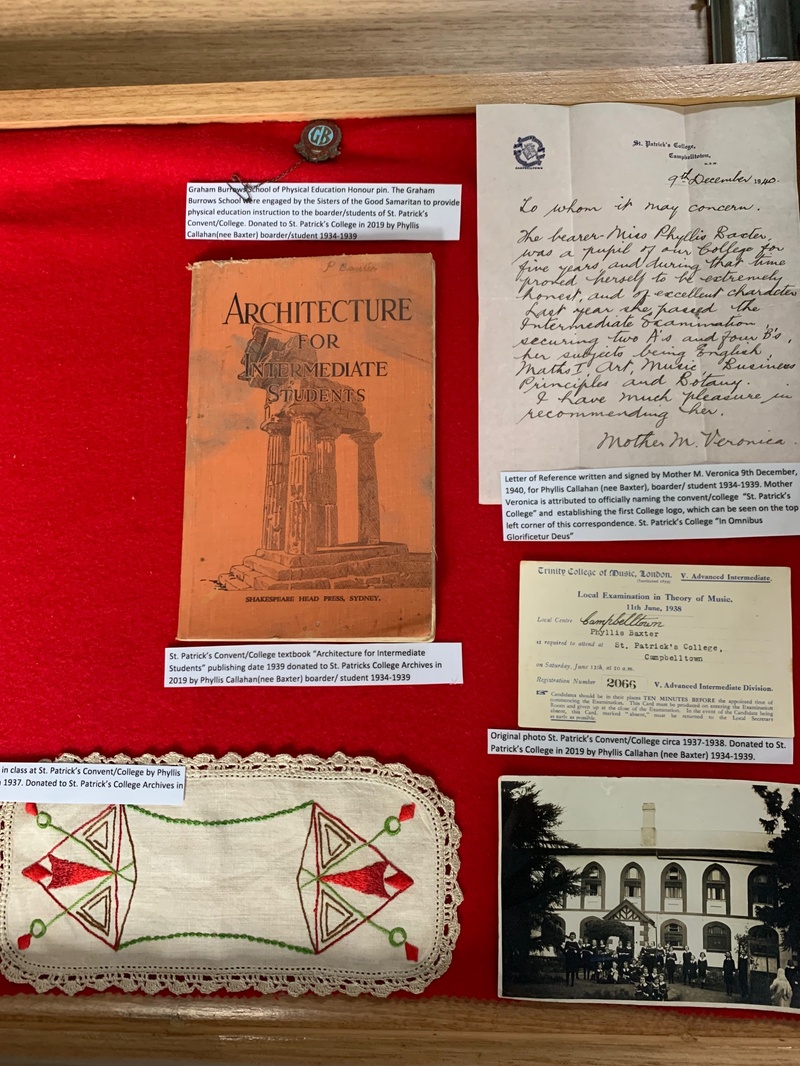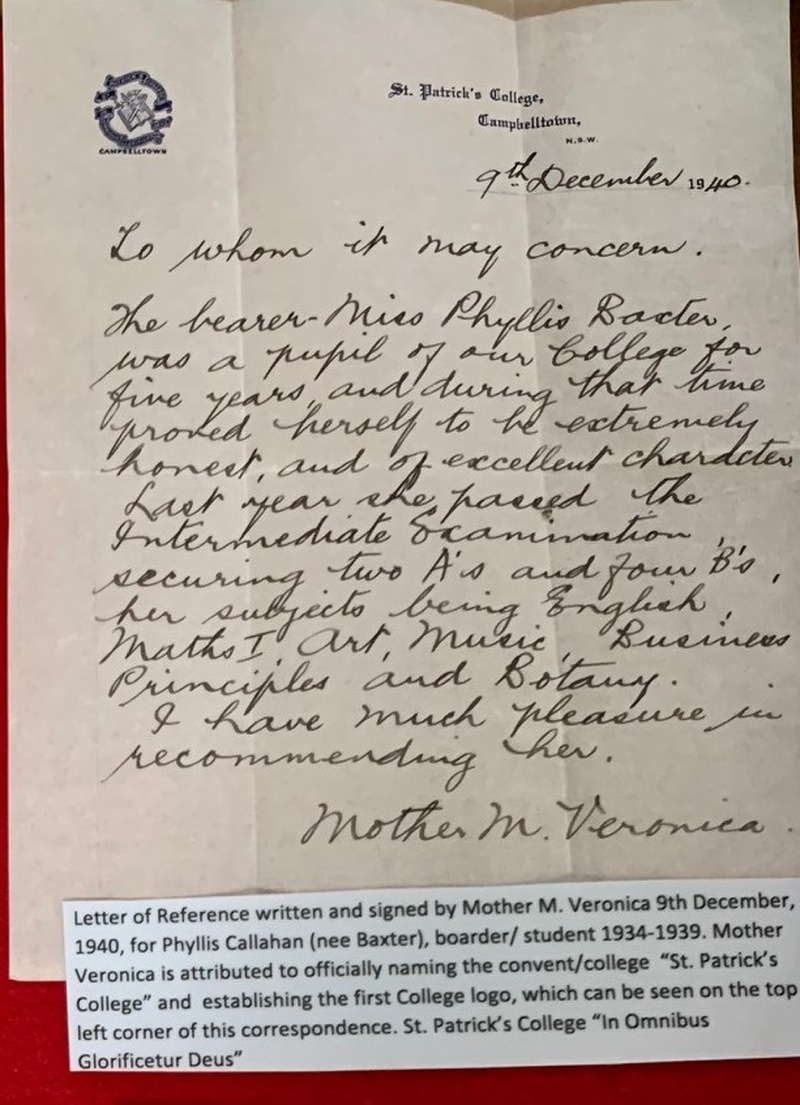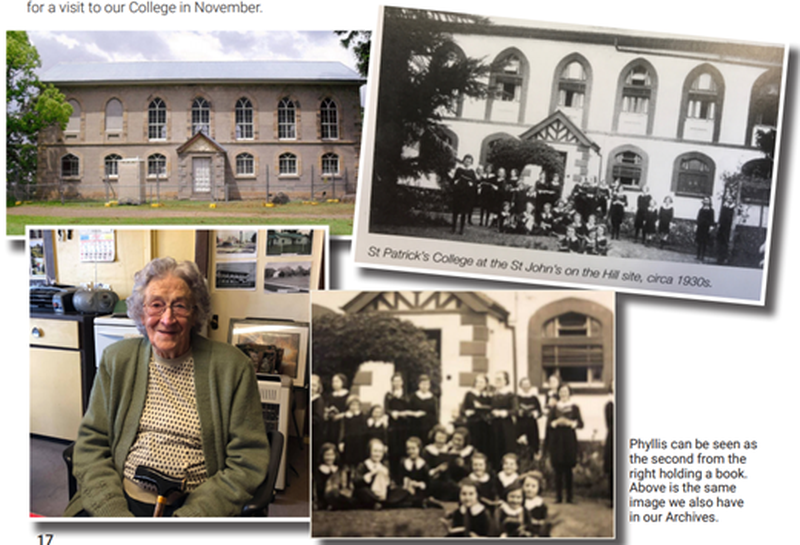Vale Phyllis Callahan (nee Baxter) Our Oldest Alumna
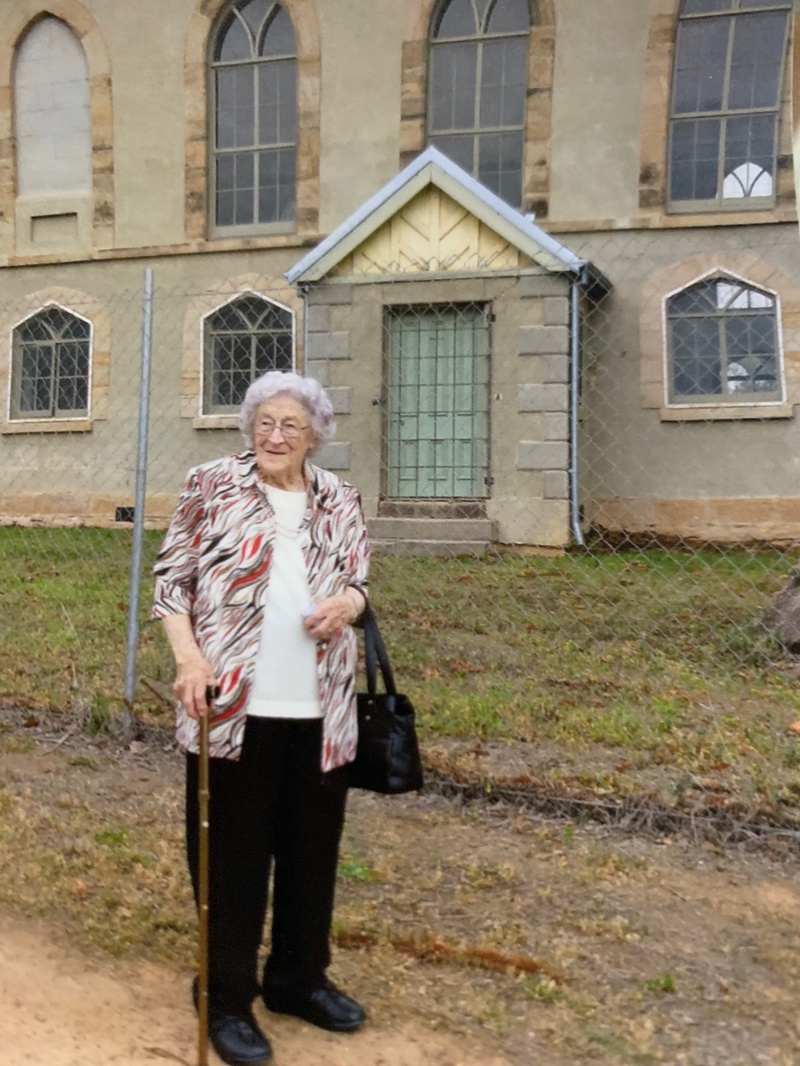
Phyllis outside her old school building (now Old St John's)
The following is an article about Phyllis taken from The Flame in 2018:
During 1934, Phyllis Baxter entered the gates of St Patrick’s Convent (later changed to St Patrick’s College) aged nine. Her sister was twelve months older and also attended. They were both boarders and from Appin, a quaint country village very different to what it looks like today.
“My parents owned a General Store in Appin. We were quite fortunate that they wanted us to have a good education. The choice was either going to school all the way in Liverpool, but it meant we would be leaving at 7am in the morning and returning at 7pm at night. Mum wasn’t keen on that, so they thought St Patrick’s would be best.”
Even though Phyllis was part of the Church of England Congregation, she acknowledged how inclusive and welcoming the nuns were, despite the Sisters of the Good Samaritan being Catholic. She was never made to attend the Chapel or Church throughout the week, however, Sunday Mass was compulsory. Phyllis struggled a little with the idea of being a boarder, whilst her sister thrived in the all-girls environment and being there every day.
“I missed home terribly. We were lucky though that we had the good fortune of having mum and dad pick us up every weekend to take us back home and be with them, as you were only allowed visitors every second weekend - this would have been hard for those with families living far away. Sometimes if mum and dad couldn’t take us home, they would always pick us up and spend the day together having a picnic. Dad and Mum even invited the nuns to come along sometimes too - it was a real treat for them. What I remember well and sometimes thought it was odd that the nuns were never allowed to eat in front of us, even in the Convent, they had their very own dining space. I never really knew why!”
Phyllis and the friends she made did have many great times during their time at St Patrick’s as boarders. There was a basketball court and tennis was always a popular activity. An educator in Physical Culture by the name of Grahame Burrows would travel from Sydney every fortnight to teach the girls all about physical education culture.
Music was something of importance back then, there were pianos everywhere and it was important to learn an instrument.
“There were pianos every where - Mother Veronica, the Superior (head nun) always said, she could tell if one piano wasn’t being played. I learnt the violin and we practised in the wash room (the bathroom) because the older you were in age, the earlier you had to get up to practice your music lessons, however, it was recommended we do this in the wash room to not wake up the little ones."
The Convent was run by the Sisters of the Good Samaritan. They had a real passion and enthusiasm for girls being educated and did what they could to make a difference. As at most convents and schools, some nuns were much nicer than others recalls Phyllis.
“Mother Veronica was the Head of the Convent and our music teacher. She was very passionate about music. There were a few nuns that were cranky, strict and didn’t like the idea of making activities or study fun. Sister Filomena was truly lovely and the best Sister was probably Sister Feica - she taught the younger ones, she was warm and always out for a bit of fun and a laugh. The nuns lived in very little rooms, they were modest of course and they were known as ‘cells’ and Mother Veronica’s room was always known as ‘The Parlour.’
Our Dormitory was upstairs and as we got older, we always had more study before bedtime. There was only one wash room (the bathroom) in the entire Dormitory, which meant we only showered once a week. Later on in the years, they built another wash room for the seniors. Warming the cold wash rooms was always difficult, but we would collect pine cones off the pine trees and use them for the heating. We had a day-time uniform that was a three-boxed pleat tunic with a long sleeve navy blue blouse and on Sundays we wore a different kind of tunic and the blouse had a white collar.'
Some time in 1939, Phyllis travelled to Camden at aged 14 to complete her Intermediate Certificate. After this, she would catch a train to Sydney, working at an advertising firm, returning home usually at 7pm. As War World II broke out, the advertising firm was liquidated and Phyllis returned home to work at her parent’s General Store in Appin. There were lots of soldiers and camps at this time and this kept her busy until she turned 18 and was ready to work in Sydney again, this time at the Post Office.
Fran Musico Rullo - HSIE Teacher
